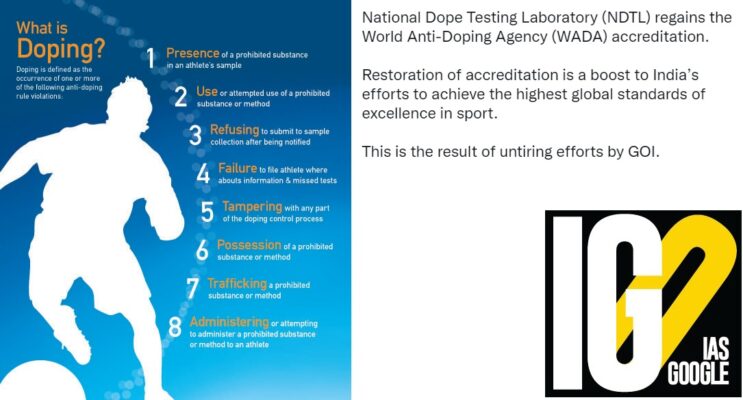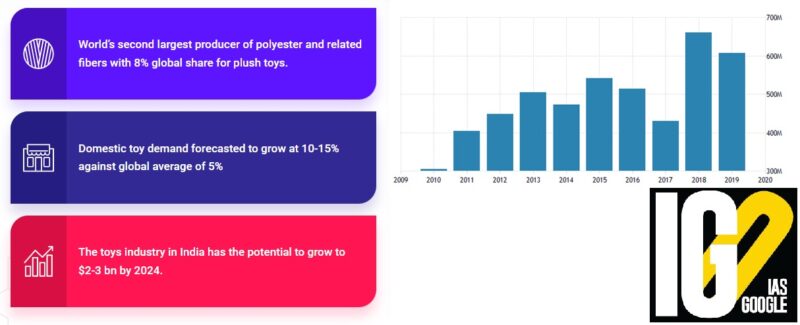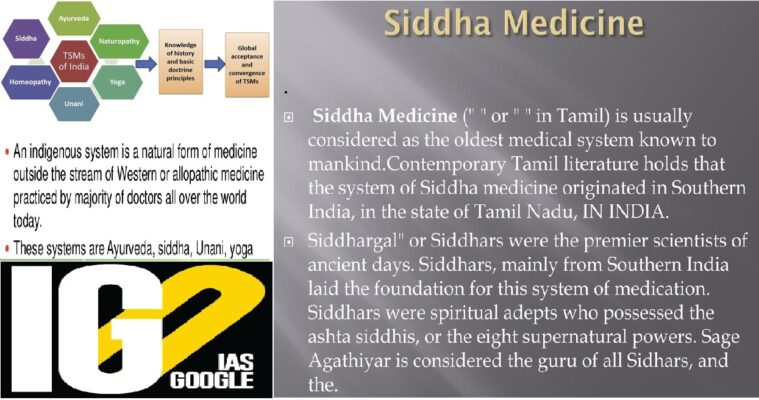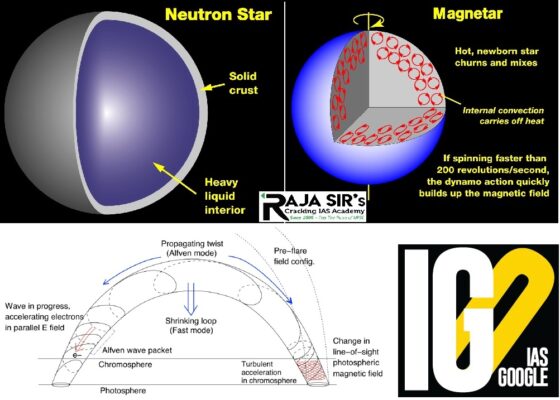- Home
- Prelims
- Mains
- Current Affairs
- Study Materials
- Test Series
Dec 25, 2021
WADA RESTORES NDTL ACCREDITATION
Recently, the National Dope Testing Laboratory (NDTL) has regained the World Anti-Doping Agency (WADA) accreditation.
 What is Doping?
What is Doping?
 Highlights of report
Highlights of report
 India’s toy scenario
India’s toy scenario
 Ayurveda
Ayurveda
 Sangam literature:
Sangam literature:
 PM-KUSUM:
PM-KUSUM:
 Silverline Project:
Silverline Project:


- The WADA accreditation was suspended in August 2019, based on non-compliances which were observed during on-site assessment of the Laboratory.
 What is Doping?
What is Doping?
- The term “doping” refers to the use of prohibited medications, drugs, or treatments by athletes with the intention of improving athletic performance.
- In 1967 the International Olympic Committee (IOC) banned doping.
- In 1999, the IOC led the initiative to form the World Anti-Doping Agency (WADA).
- WADA assists in setting the standard for other agencies and sports.
- According to the World Anti-Doping Codea substance or treatment constitutes doping if it meets two of the three following criteria:
- It enhances performance
- It presents a risk to the athlete’s health
- It is contrary to the spirit of the sport
- NDTL is a premier analytical testing & research organization established under Ministry of Youth Affairs and Sports.
- Aim: To get permanently accredited by International Olympic Committee (IOC) and World Anti-Doping Agency (WADA) to do the testing for the banned drugs in human sports.
- It is one of the 32 WADA accredited laboratories in the world.
- To provide accurate & reliable testing services for Dope testing of Human sports to the satisfaction of clients
- To become an institution with high level of research in drug of abuse analysis in the country.
- To conduct research in Bio-Chemistry, Forensic science, Bio-technology, Chemistry & Pharmacology to innovate new methods for drugs of abuse analysis.
- To conduct research in drug of abuse and allied area under inter-disciplinary scheme to promote the interest of young talent.
- WADA was established in 1999 as an international independent agency.
- It is composed and funded by the sport movement and governments of the world.
- Aim: To lead a collaborative worldwide movement for doping-free sport.
- Its key activities include scientific research, education, development of anti-doping capacities, and monitoring of the World Anti-Doping Code.
- World Anti-Doping Code is the document harmonizing anti-doping policies in all sports and all countries.
- To protect the rights of all athletes in relation to anti-doping, contributing to the integrity in sport.
- To maintain the highest ethical standards and avoid improper influences or conflicts of interests that would undermine independent and unbiased judgement.
- To develop policies, procedures and practices that reflect justice, equity and integrity.
 Highlights of report
Highlights of report
- Life expectancy in 2020 reduced in 29 of the 37 countries surveyed.
- Life expectancy remained unchanged for Denmark, Iceland and South Korea.
- New Zealand, Taiwan and Norway recorded increases in life expectancy.
- Russia recorded the largest drop in life expectancy.
- It is an indication of how long on average people can expect to survive if the age specific mortality rates of that year remain constant for the remainder of their life.
- As per Economic Survey 2020-21, Life expectancy at birth improved from 69.4 years in 2018 to 69.7 years in 2019.
- India’s life expectancy is less than the world’s average lifespan of 72.81 years.
- Life expectancy in India dropped by two years due to COVID-19. For men and women, now it is 67.5 years and 69.8 years respectively in 2020.
 India’s toy scenario
India’s toy scenario
- India’s domestic toy market is valued at 5750 Crores per annum.
- Currently, the production and import of toys in India rising at the rate of 10-15% every single year.
- The toy industry in India is facing severe competition from Chinese toy imports.
- China is the largest exporter of toys in the world.
- The global market for toys is estimated at US$ 80 billion.
- Indian toy market comprises less than 08 percent of this huge market.
- India’s import of toys in the financial year 2018-2019 stood at $1.4 billion.
- Almost 85% of the toys sold in India are imported, with China being the top source, followed by Sri Lanka, Malaysia, Germany, Hong Kong, and the US.
- The government has emphasized using tourism as a tool to promote India’s culture, especially in regions that are renowned for handcrafted toys.
- Under the ‘Vocal for Local’ slogan and ‘Aatmanirbhar Bharat’ campaign, the government shall explore opportunities to tap the potential of the sector.
- A national action plan has been created by the Department for Promotion of Industry and Internal Trade (DPIIT), MSME, and other departments to promote the toy industry.
- Toy Cluster Programme was organized in 2020, to build toy clusters in dedicated SEZs and help them become customized, self-sustained ecosystems catering to export markets.
- Toycathon-2021, an online toy hackathon for innovative toys, is another initiative taken by six different ministries and departments of the government.
- It aims to enhance toy manufacturing capabilities.
- The Indian Government had organized the India Toy Fair 2021, making India a global hub for the manufacturing and sourcing of toys.
- The Government has issued Toys (Quality Control) Order, 2020.
- As per the Order, every toy shall conform to the requirements of relevant Indian Standard and bear the Standard Mark under a license from BIS as per scheme-I of BIS Regulations, 2018.
 Ayurveda
Ayurveda
- Ayurveda’ is generally understood as Science of life translating Ayuh (r)as life and Veda as science.
- It is an ancient system of life and also the oldest surviving medical system in the world.
- Dating back almost 5000 years, it is also considered to be an ancient science of healing that enhances longevity.
- It has evolved from the quest to have a happy life, through a deep understanding of creation and its maintenance, perceived and conceived by the rishis or seers of ancient India.
- The philosophy: It teaches a series of conceptual systems characterized by balance and disorder, health and illness.
- Three principal early texts on Ayurveda: Charaka Samhita, Sushruta Samhita and Bhela Samhita.
- Kapha: It governs all structure and lubrication in the mind and body.
- Pitta: It controls digestion, metabolism, and energy production.
- Vata: It is known to govern all the movements of mind and body.
- The Siddha system of medicine is mainly practised in the Southern part of India.
- It is one of the earliest traditional medicine systems in the world which treats not only the body but also the mind and the soul.
- The word Siddha has its origin in the Tamil word Siddhi which means an object to be attained or perfection or heavenly bliss.
- Siddhars were spiritual masters who possessed the ashta (eight) siddhis or unique powers.
- Agastyar or Agasthya, is believed to be the founding father of Siddha Medicine.
- Eighteen Siddhars are considered to be pillars of Siddha Medicine.
- Kayakarpam, Varmam, Vaasi (Pranayamam) and Muppu the universal Salt are the specialities of Siddha system of medicine.
- It is the science in which we learn various states of body in health and when not in health and the means by which health is likely to be lost and when lost, is likely to be restored.
- It practiced in Middle East and South Asian countries.
- It refers to a tradition of Graeco Arabic medicine, which is based on the teachings of Greek physician Hippocrates and Roman physician Galen.
- It provides promotive, preventive, curative and rehabilitative healthcare.
- It offers treatment of diseases related to all the systems and organs of the human body like chronic ailments, diseases of skin, liver, Musculo skeletal and reproductive systems.
- Unani physicians give prime importance to diet and the state of digestion in a person, in both health and disease.
- It is commonly known as Amchi system of medicine is one of the oldest, living and well documented medical tradition of the world.
- It has been popularly practiced in Tibet, Mongolia, Bhutan, some parts of China, Nepal, Himalayan regions of India and few parts of former Soviet Union.
- It is based on the principles of Jung-wa-nga and Ngepa-Sum.
- The body in disease as the locus of treatment
- Antidote
- The method of treatment through antidote
- Medicine that cures the disease
- Materia Medica, Pharmacy & Pharmacology
- It is also known as homeopathic medicine, is a medical system that was developed in Germany more than 200 years ago.
- Like cures like: The notion that a disease can be cured by a substance that produces similar symptoms in healthy people.
- Law of minimum dose: The notion that the lower the dose of the medication, the greater its effectiveness.
- It’s products come from plants, belladonna, minerals, animals.
- It uses a different diagnostic system for assigning treatments to individuals and recognizes clinical patterns of signs and symptoms that are different from those of conventional medicine.
 Sangam literature:
Sangam literature:
- Sangam literature is the name given to the earliest available Tamil literature.
- The Sangam age roughly extends between 300 BC and 300 AD.
- The word ‘Sangam’ means association.
- Here, it implies an association of Tamil poets that flourished in ancient southern India.
- The three chief Tamil kingdoms of this period were the:
- Cheras
- Cholas
- Pandyas.
- According to the context and interpretation, Sangam literature is divided in 2 sections:
- Aham: It includes feelings about love, relations etc.
- Puram: It includes heroism, social life, etc.
- It was composed by Tolkappiyar.
- It is the oldest extant Tamil work till date.
- It discusses Tamil grammar and also offers information on social life, human psychology, political and economic conditions during the Sangam Age.
- Influence of Sanskrit on this work is peripheral and very little.
- It was composed by Ilango Adigal.
- The story revolves around an anklet.
- The name means the tale of an anklet.
- The poem gives insight into contemporary Tamil society, polity, values and social life of the people.
- It was composed by Chithalai Chathanar.
- It is a sequel to Silapathikaram.
- The author’s aim was to propagate Buddhism in South India as the work espouses the values of Buddhism over other religions of the time.
- The Eighteen Greater Texts, known as Patinenmelkanakku, is the collection of the oldest surviving Tamil poetry.
- This collection is considered part of the Sangam Literature.
- It is a series of eighteen major anthologies, which includes the Eight Anthologies (Ettutokai)and the Ten Idylls (Pattuppattu).
- The songs are set in the Akaval style.
 PM-KUSUM:
PM-KUSUM:
- Pradhan Mantri Kisan Urja Suraksha evam Utthaan Mahabhiyan was cleared by the Union Cabinet in February 2019.
- Aim: To provide water and energy security to farmers and enhance their income.
- Under the scheme, 30.8 GW solar power capacity is targeted by 2022 with Central assistance of ₹34,035 crore.
- As on November 30, 2021, the total of 4,909 megawatts (MW) of solar power was sanctioned and 20 MW has been installed.
- Upside potential in the programme also exists if financing and implementation challenges are resolved.
- The KUSUM programme supporting solar photovoltaic (PV) deployment in rural areas has a target of commissioning about 31GW of photovoltaic (PV) capacity until 2024.
- Due to financing and implementation challenges, it will reduce about 10 GW over 2021-2026.
- India is expected to add 121 GW of renewable capacity over 2021-2026, an 86% increase on existing capacity.
- This will make India the third-largest growth market globally after China and the United States.
- China and the European Union are set to overshoot their current targets, setting the stage for a more ambitious growth trajectory.
- Relative to existing capacity, renewable power is growing faster in India than any other key market in the world.
- Asia is set to overtake Europe as India and Indonesia lead renewed growth in global demand for biofuels.
- This is due to strong domestic policies, growing liquid fuel demand and export-driven production.
- Recent Indian ethanol policies and blending targets for biodiesel in Indonesia and Malaysia are responsible for most of the growth in Asia.
- India is set to become the third largest market for ethanol demand worldwide by 2026.
- For wind and solar PV projects in advanced economies, various challenges to permitting and grid integration have led to lower-than-planned capacity.
- In emerging and developing economies, stop-and-go policies, lack of grid availability and risks concerning off-takers’ financial health are hurting investor confidence, resulting in elevated financing rates.
- Lack of remuneration and targeted policy support for flexibility are an issue in all countries.
- Challenges concerning social acceptance of wind and hydropower projects caused an increasing number of countries to delay or cancel planned projects.
- Renewable energy capacity needs to grow faster to close the gap with a pathway to net zero by 2050.
- For solar PV and wind, average annual additions would need to be almost double over the next five years.
- To align with the Net Zero Emissions by 2050, countries would need to implement existing and planned policies before 2026.
- These Policies must incentivise greenhouse gas reductions, not just biofuel demand.
- Governments must strengthen their policy focus on dispatchable renewable electricity and renewable energy use in buildings, industry and transport.
- It is an art and cultural academy dedicated to the preservation of traditional values in Indian art and crafts, especially in the field of Bharatanatyam dance and Gandharvaveda music.
- It is a renowned training institute for the classical dances of India.
- Aim: To train and encourage young artists and to revive Bharatanatyam, the classical dance form of Tamil Nadu.
- She was an Indian classical dancer who led the renaissance of the ‘Bharatnatyam’ dance form.
- She founded the Kalakshetra Foundation in Madras.
- She was also a theosophist who was greatly inspired by Annie Besant, the Theosophical Society’s British co-founder, and president.
- She was nominated as a member of the Indian Parliament's Council of States (the Rajya Sabha) in 1952.
- She was the first Indian woman to be nominated in Rajya Sabha.
- She removed the inherent eroticism of Sadhir dance to make it palatable to Victorian British morality and Indian upper-caste elites.
- She became the President of the All-India Federation of Young Theosophists in 1923 and the President of the World Federation of Young Theosophists in 1925.
- She was honored with the Padma Bhushan, the third-highest civilian award of India, in 1956, for her contribution to arts.
- The Sangeet Natak Akademi Puraskar, the highest Indian recognition given to practicing artists, was bestowed upon her in 1967 by the Sangeet Natak Akademi.
- The Animal Welfare Board of India presented her with the ‘Prani Mitra’ award in 1968 for her work as an animal rights activist.
 Silverline Project:
Silverline Project:
- It is a semi high-speed rail corridor that connects one end of Kerala to the other.
- It will link Thiruvananthapuram in the south to Kasaragod in the north covering 11 districts in just 4 hours.
- Length-532-km
- Deadline of project- 2025
- Project execution agency: Kerala Rail Development Corporation Limited (KRDCL) or K-Rail.
- It is a joint venture between the Kerala government and the Union Ministry of
- The Kerala Infrastructure Investment Fund Board (KIIFB) has sanctioned Rs2,100 crore for the project.
- Reason-Most trains run at an average speed of 45 km/hr due to a lot of curves and bends on the existing stretch.
- The Silverline project can take a significant load of traffic.
- It can make travel faster for commuters.
- It will reduce congestion on roads and help reduce accidents.
- It will also reduce greenhouse gas
- It helps in expansion of Roll on Roll Off service (Ro-Ro) services.
- It is a concept in which an open flat railway wagon carries road vehicles loaded with various commodities
- It will produce employment opportunities.
- It will help in integrating airports and IT corridors, and enable faster development of cities.
- The project is financially unviable and would lead to displacement of over 30,000 families.
- It would cause great environmental harm as its route cuts through precious wetlands, paddy fields and hills.
- The building of embankments will block natural drainage and cause floods during heavy rains.
- A petition signed by 17 Opposition MPs from the state and has urged the government to abandon the project and explore sustainable solutions.

- Magnetars are a type of isolated neutron stars that possess the most intense magnetic fields.
- A neutron star is the collapsed core of a massive supergiant star, which had a total mass of between 10 and 25 solar masses.
- They experience violent eruptions or intense bursts in the form of transient X-ray pulses which are several orders higher than that of the
- Like earthquakes on Earth, magnetars have starquakes.
- These are produced on their crust due to high instability prevailing in their magnetospheres.
- The instability triggers Alfven waves that are also common in the Sun.
- The interactions between multiple Alfven waves ultimately release massive energies, appearing as giant flares lasting for a few milliseconds.
- An Alfvén wave in a plasma is a low-frequency travelling oscillation of the ions and the magnetic field.
- The wave propagates in the direction of the magnetic field.
- It is a project led by the European Space Agency.
- It placed cameras and X-ray/γ-ray detectors on the International Space Station.
- Objective: To observe the upper atmosphere in order to study sprites, jets and elves and terrestrial gamma-ray flashes in connection with thunderstorms.

- It is a statutory tribunal established under the SEBI Act, 1992.
- It has the only bench which sits in Mumbai.
- It hears and disposes of appeals against:
- Orders passed by the SEBI or by an adjudicating officer under the SEBI Act.
- Orders passed by the Pension Fund Regulatory and Development Authority (PFRDA) under the PFRDA Act, 2013.
- Orders passed by the Insurance Regulatory Development Authority of India (IRDAI) under the Insurance Act, 1938, the General Insurance Business (Nationalization) Act, 1972 and the Insurance Regulatory and Development Authority Act, 1999, and the Rules and Regulations framed thereunder.
- It has a presiding officer and 2 other members.
- All members and presiding officers will be appointed by the Union Government in consultation with the Chief Justice of India.
- Like other tribunals,
- SAT is not bounded by the procedures of the Code of Civil Procedure, 1908.
- Appeal against SAT’s decision lies in High Court.
- Article 323-A: Administrative Tribunals.
- Article 323-B: Tribunals for other matters.









 Latest News
Latest News
 General Studies
General Studies